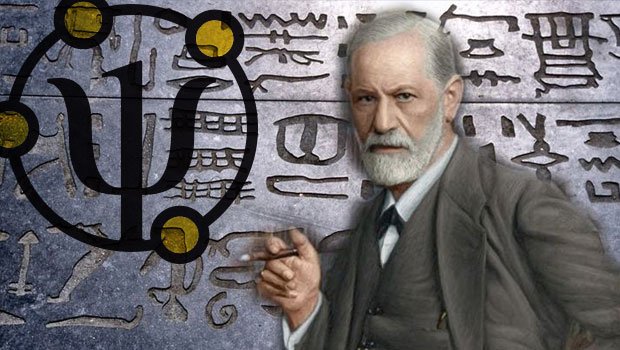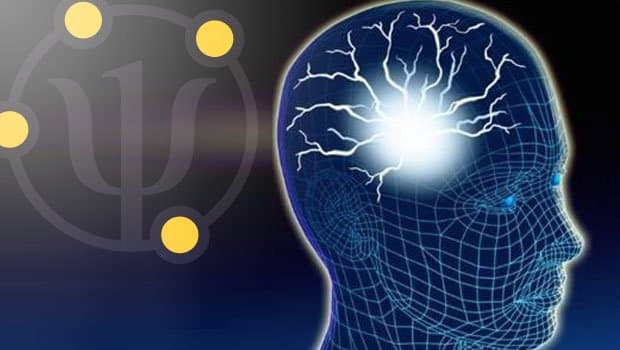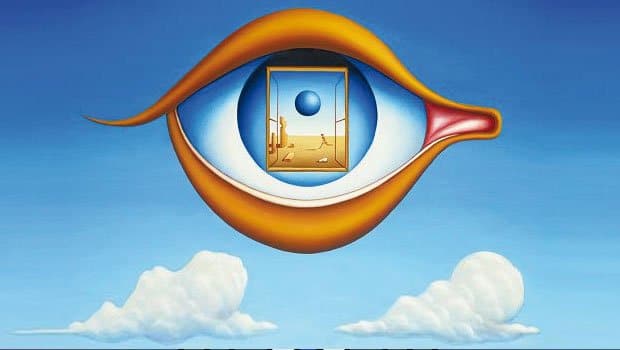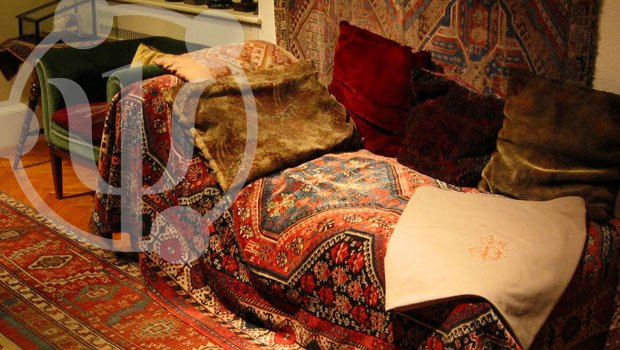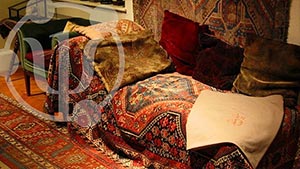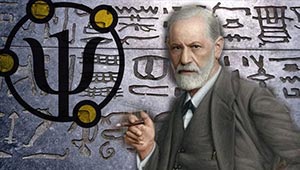As is well known, in Jensen’s Gradiva, which passionated Freud so much 1, the protagonist, the archeologist Norbert Hanold, whilst visiting a museum in Rome, discovers a bas-relief that strikes him so much that it makes him procure a plaster cast of the artefact to take home with him.
On this bas-relief there is a female figure represented, walking with such a natural grace that she seems to give life to the stone image. Norbert progressively begins to feel an obsessive attraction towards the stone figure, an interest which he himself recognises to go beyond the professional curiosity and he calls the figure “Gradiva”, meaning “She who advances”.

The act of dreaming-off is a psychic function formulated by Silvio Fanti and described in the Psychoanalysis and Micropsychoanalysis Dictionary as follows: “Dreaming-off: completes the work performed by the dream, by psychically or somatically metabolising the night’s residues” 2
The night’s residues, as we know, are the representational-affective unconscious residues of the reactivation of the uterus-infantile desires, which happens in the sleep and dream state. I believe that the attraction for Jensen’s splendid work is clear: it speaks about a great trauma rooted in the past, literarily represented by the cataclysm of Pompei, which one unconsciously tries to recreate to change the course of events. Gradiva is the Wandering Statue, the Sphinx, the Image which captures all of Norbert’s vital energies. The recovery takes place in the moment in which the protagonist’s psychism manages to unbind itself from the imperiousness of the statue (in other terms, from the delusion) and place itself in the present, putting an end to the whirlpool into the past. A past which often has the appearance of a wandering spirit, of a restless entity.

The young man suffered from a tormenting hallucination: the perception of his mother’s ghost, who died when he was only two years old, which spied on him and appeared to him in the strangest situations: a torment which had pushed him to the brink of suicide.
In reality, the deep psychoanalysis of the case showed that the young man had manifested a serious form of Spitz anaclitic depression during his early childhood, provoked by the precocious death of his mother and partially protected by a psychotic position of denial of the loss: the paranoiac defence, as often happens, was a psychic mechanism against sliding into a mortiferous depressive state.
Through a long period of analysis he succeeded in becoming aware of his mother’s loss, in elaborating the mourning and in establishing a satisfying relationship with a young woman, on a sexual-affective level.
The micropsychoanalytic treatment had determined the unbinding from the persecutory image of the wandering “zombie-mother” who was at the same time, an intolerable persecution, but however, a defence mechanism and with a spectacular improvement in his social life, it had uncovered the conflict structure which was rooted, as happens in these cases, in the phylogenetic vicissitudes of the subject. I have already published a detailed description of the genealogical case history in my work “Transgenerational Transmission of the Image With Particular Reference to the Phylogenetic Determiner of Paranoia” and it is there to which I refer the readers; what I am urged to underline now is that the liberating turning-point of the case (which allows the young man to come out of the psychosis and put an end to the hallucinatory phenomena, exactly as happens in the “Gradiva”) arrives through the analysis of a dream which the young man brings to the session together with a picture frame containing a photo of his mother (a modern version of a bas-relief!) that for many years he had kept jealously on his bedside cabinet. The manifest content of his dream in synthesis is the following:
– I am in my bed; my granddad arrives and wants his place back. I have to go to the radio station and he takes his place back. I am in bed, you are in a session analysing me and you are in my mother’s place in the photo in the picture frame that I have brought you (this is known as the transference!). I find myself asking someone for directions thinking that it’s very strange that I’ve got lost. Finally, I arrive at the station. Then I see a pack of white dogs but I have to go my own way” (in other terms he has to leave the pack)
This is a small part of the associative material which was spontaneously produced during a four hour long session dedicated to this dream: “It’s as if everyone must take back their own place… every chess piece returns to its place. It is as if in my life the agony of my mother is relived, that of her father and the hatred of my abandoned grandmother. I was speaking about the Image: this image torments me and it is as though I have to place all my energies to the service of this image. I do everything I can to enter that photo…”. I enlarge the photo to the maximum possibility for him, projecting it with an episcope. He cries. “Since she no longer lives, she lives inside me… I was in the wrong place… my granddad wanted his place back, which I had occupied… I had recreated that which had created me… I try to get to my place in the radio station… then I arrive at a train-station – (He shouts:) – I am a train-station!… It’s fantastic! I am a train-station, I am a set point, not a meteor which wanders through space! I can’t go back: I have overcome a wall; I remain fixed!”.

Following these dynamics and verifying them continuously during the course of the genealogical research I have progressively reached an idea of the paranoiac syndrome which induces me to interpret it as a defect of actualisation of the human psychism that continues to be subdued to the Image’s will, which dictates in an anachronistic and repetitive way the ontogenetic modalities of the existence.
In subjects who have a semi-autistic structure as in the case of the young man, inaccessible islands governed by a narcissistic and fusional modality of existence remain. Islands where everything is possible, where the animism of the primogenial ancestors reign and where the dead speak to the living, in other words, they overflow from dreams in which images without time live, the “Eternauta”, as Nicola Peluffo efficaciously defines them, and give place to pseudo-hallucinatory or frankly hallucinatory phenomena.

This explains, among other things, the frequency of the vicissitudes of possession or the delusion of influence in the paranoiac psychosis: the paranoiac is effectively a person possessed by the messages of the Image which are transmitted through an oneiric activity that is not sufficiently dreamed-off; he is a loudspeaker who tries desperately, without managing, to become a transmitting centre.
The obvious connection between a dream not dreamed-off and a delusion was already evident in Freud’s research.
Already in the “The Interpretation Of Dreams” the Master points out: ““… to the rapid change of the representations in the dream, corresponds the flight of ideas in the psychosis. In both cases any measure of time is lacking. The oneiric splitting of the personality which divides, for instance in the dream, one’s own knowledge between two different people, one of whom is unknown and corrects the Ego, is indeed equivalent to the well known splitting of the hallucinatory paranoia; even he who dreams hears his own thoughts exposed by unknown voices. An analogy even exists for the delirious fixed ideas: the pathologic dreams which repeat themselves in a stereotypic way (rêve obsédant). It is not rare that once healed from a delusion, the patients say that the whole period of the illness seemed to be a dream to them, which often, was not unpleasant and in fact they tell how, sometimes, while they were still ill, they had had the impression of only being imprisoned by a dream, as often happens in real dreams”.3
Written by: Quirino Zangrilli © Copyright
Translated by Linda De Nardo
Abstract taken from the report presented at the “Delusion and Hallucination” Congress held at Capo d’Orlando on the 10th and 11th November 2006
Notes:
1 – S. Freud, Il delirio e i sogni della Gradiva di Wilhelm Jensen, Opere, Vol. 5, Boringhieri, Torino, 1975.
2 – Silvio Fanti, Dizionario di psicoanalisi e micropsicoanalisi, def. n° 310, Borla, Roma, 1984.
3 – S. Freud, L’interpretazione dei sogni, Opere, Vol. 3, 1899.
Nel 2024 riceve il Premio Accademico d’Onore della Accademia Culturale Internazionale Cartagine 2.0.
Nel 2024 docente ad Almaty – Kazakhstan presso il workshop di psicoanalisi sul tema della violenza, promosso dall’Università di psicoanalisi di Mosca in collaborazione con l’Istituto svizzero di micropsicoanalisi.
Doctor Quirino Zangrilli was born in Fiuggi in 1955. Graduated with honours in Medicine and Surgery in 1980, he practices Psychoanalysis, with intensive method, since 1982. He is author of 74 scientific pubblications. He has attended as speaker or president of session to many national and international scientific Conventions. His book “La vita:involucro vuoto” (Life: empty involucre), published by Borla in 1993, has been in use by the Chair of Dynamic Psychology at Turin’s University since 1994. He is the author and founder of the multimedia review “Psicoanalisi e Scienza” (Psychoanalysis and Science), the most read Italian on line review of psychoanalysis. In 2012 he participated as a Speaker at the Scientific Festival of BergamoScienza. In 2013 he illustrated his research on the maternal-fetal interaction in the Special Session of the XI World Congress of Perinatal Medicine in Moscow with his relation “Intrauterine Imprinting”. He is visiting teacher at Moscow Institute of psychoanalysis and training psychoanalist of Swiss Institute of Micropsychoanalysis.
In 2024 he is a teacher in Almaty – Kazakhstan at the psychoanalysis workshop on the topic of violence, promoted by the Moscow University of Psychoanalysis in collaboration with the Swiss Institute of Micropsychoanalysis.
In 2024 he received the Honorary Academic Award of the Carthage 2.0 International Cultural Academy
Le Le Docteur Quirino Zangrilli est né à Fiuggi en 1955. Diplômé avec mention en Médecine et Chirurgie en 1980, il pratique la psychanalyse depuis 1982, en utilisant une technique intensive. Il est l’auteur de 74 livres et publications scientifiques. Il a participé en tant que conférencier ou président de session à de nombreuses conférences scientifiques nationales et internationales. Son livre “La vie : enveloppe vide”, publié par Borla en 1993, est adopté depuis 1994 par la Chaire de Psychologie Dynamique de l’Université de Turin. En 1994, il a reçu le “Prix national Ciociaria de médecine”. Il a conçu et fondé le magazine multimédia “Psicoanalisi e Scienza”, qui est le magazine de psychanalyse en ligne en italien le plus suivi au monde. (Source : Entireweb, Alexa, Google, Virgilio, Arianna., etc.). En 2012, il a participé en tant que conférencier à la colloque scientifique de BergamoScienza. En 2013, il a exposé ses études sur l’interaction materno-fœtale lors de la session spéciale du XIe Congrès mondial de médecine périnatale à Moscou avec le rapport “Intrauterine Imprinting”. Il est chargé d’enseignement au cours de spécialisation de trois ans en psychanalyse, psychothérapie psychanalytique et consultation psychanalytique à l’Université de Moscou. Il est membre didacticien de l’Institut Suisse de Micropsychanalyse et de la Commission pour la Pratique de celui-ci.
En 2024, il enseigne à Almaty – Kazakhstan à l’atelier de psychanalyse sur le thème de la violence, promu par l’Université de Psychanalyse de Moscou en collaboration avec l’Institut Suisse de Micropsychanalyse.
En 2024, il reçoit le Prix Académique Honoraire de l’Académie Culturelle Internationale Carthage 2.0.
В 2024 году является преподавателем в Алматы – Казахстан на семинаре по психоанализу на тему насилия, проводимом Московским университетом психоанализа в сотрудничестве со Швейцарским институтом микропсихоанализа.
В 2024 был награжден Почетной академической премией Академии Международной Культуры «Карфаген 2.0».

